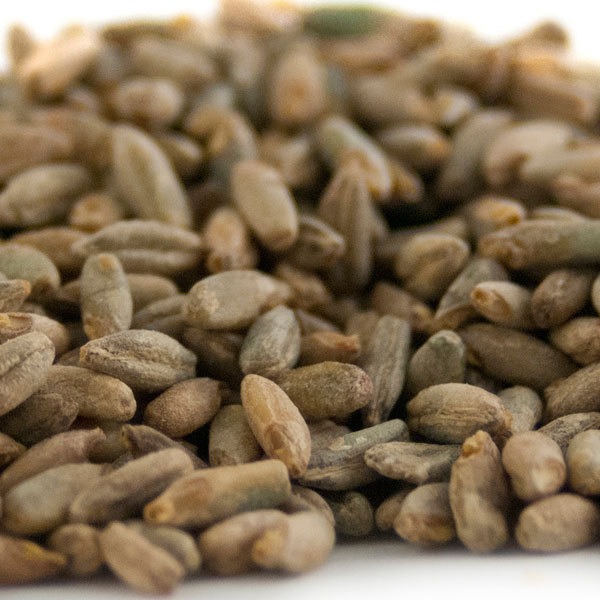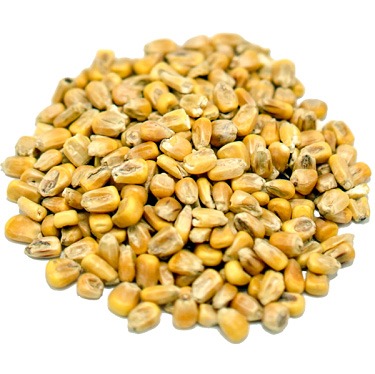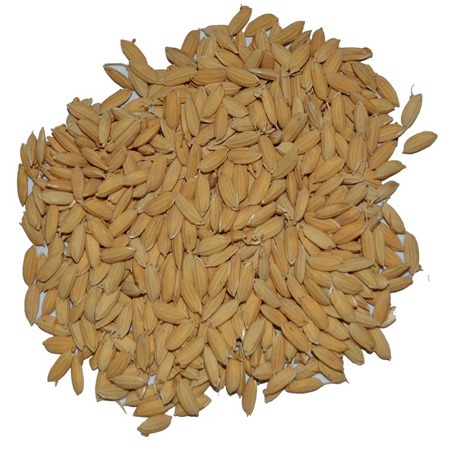Malted “Others”: Adjuncts that are no longer raw
In the course of brewing history, human beings have strayed so far from the mystical magic of the vaunted four ingredients of beer — malted barley, hops, yeast, water — that it seems like a holy peak to attain as opposed to the practical.
Look around these days and you’ll see breweries and brewers throwing everything into the mash and the package. Want whole cheeseburgers in your beer? Yeah, there are a few of those. Donuts? Jeez, get into line, man — two blocks over! Fresh fruit puree straight into the growler. Well yes, people are doing that, but for the love of all things beery: No! Let’s get back to the nuanced and fundamentals of beer and brewing. Today it’s time to talk about the malted “adjuncts” we can use in beer.
A Quick Review of Malt
We’ve said the word “malt” enough that it’s become almost devoid of meaning, so let’s shove some meaning back into our brainpans. Remember that kernels of our cereal grains are seeds that we’ve hijacked for culinary purposes. Each kernel is full of the stuff needed to create more cereal. Malting is our process of activating the grain’s inner growth engine to unlock even more potential.
Malting starts with dried grain (like barley) steeped in water off and on for a few days to activate the seed and begin the process of growing a new plant.
It’s whisked away to germinate. Inside the kernel a new sprout forms and a number of chemical changes happen including beginning the degradation of the starchy interior, releasing enzymes (like amylases), and freeing the nutrients necessary to create a plant.
The maltster closely monitors the process and waits for the acrospire (sprout) to become visible and almost as long as the kernel. If they did nothing, we’d be well on our way to making a new stalk of grass, but being interested in the results for other purposes, the maltser arrests the growth and dries the malt with carefully controlled blasts of hot air. Different varieties of malt, from plain base malt to roasts and toasts and caramel malts, all have differing drying processes to add color and character.
There’s a ton of details that we’ve left out — we don’t have the whole magazine after all! But suffice it to say the process of malting prepares the grain to become beer as the universe clearly intended it to be!
Other Malts
You’d be forgiven if you walked into this thinking that malt and barley are synonymous. But even though barley comprises most of what is malted, you now know that malting is just a process for supercharging a grain for brewing and baking purposes. (So many baked goods have malted barley in them; you’d be surprised!)
Different varieties of malt, from plain base malt to roasts and toasts and caramel malts, all have differing drying processes to add color and character.
As a side note — barley is our chief malting cereal largely because it starts with a high level of enzymes, which makes it ideal for a conversion scenario like mashing. Also, let’s face it — barley bread is not nearly as tasty as the stuff made from wheat, which is why historically so much barley has gone to animal feed. Unmalted adjuncts depend on the enzyme content found in malted grains, like barley, to fully convert in the mash. Fortunately, modern barley malt is so enzymatically “hot” that barring crazy loads of non-enzyme containing adjuncts, you’ll be fine.
So what else is out there and what do they bring to the table? We’ll start with the “most obvious” and move down the list — and for our friends trying to avoid gluten — this becomes very important!
Malted Wheat

Chances are if you think of anything as malted, other than barley, it’s good old wheat. Wheat has a long history of being used in brewing. Speculative recipes of beers from the Egyptian and Sumerian periods often use a blend of barley and early varieties of wheat like Emmer and Einkorn. Wheat has had such a long history of domestication and importance to human civilization that it would be odder to not find it in beer repeatedly and continuously.
After all, the theory goes that the usage of wheat for beer instead of bread was one of the reasons behind the formation of the vaunted Reinheitsgebot. (Theory being that the popularity of weizen beers threatened the bread supply in Bavaria, so out it went for the general populace, except for the royals . . . well that’s another legend.) The classic Bavarian hefeweizen is a simple blend of pale malt and wheat malt – with grain bill ratios like 60-70% wheat malt and the rest being pale malt. Note that at that usage level, you’d find it impossible to convert unmalted wheat without additional enzymes.
Note that there are two base types to raw wheat — white and red. The difference lies in the outer bran coating (red has coloring) and protein levels (white has less). There are people who swear they can tell the difference between red and white wheat in their beers and a hefeweizen would be the best case for it with its heavy wheat character, but we’ve never detected it. In the US, many homebrewers were taught to use wheat malt in their recipes for better head retention thanks to wheat’s higher protein content compared to barley. That lesson seems to have largely subsided as practices and products have become better, but a little wheat can still lend a soft sweetness to your beer.
Malted Rye

Denny discovered the joys of rye malt when he was developing his semi-world famous (neighborhood famous?) rye IPA recipe around the turn of the century. He had been brewing an IPA recipe from BYO when he heard discussion of rye malt on the late, lost Homebrew Digest mailing list. (Yeah, that’s how long ago it was!) He decided he’d start experimenting with replacing a portion of the base malt with rye malt. It added a beautiful, full mouthfeel along with an earthy spiciness. And a monster was born. The same process can be applied to any beer where you want to experiment with rye malt. Simply replace a portion of the base malt with rye malt. Remember, we’re talking about rye malt here, not flaked rye, which has a distinctly different flavor.
A couple caveats about using rye malt. You’ll often hear people say you need to use rice or barley hulls with malted rye to improve lautering and help avoid a stuck runoff. That’s pretty much dependent on the lauter design of the brewing system you use, so know your equipment. With Denny’s hose braid/batch sparge system he’s never had a stuck runoff, even using as much as 60% rye malt. If your system is prone to stuck runoffs, you should probably toss a handful of hulls mixed into the mash.
The other thing to think carefully about is how much rye you’ll be using. Denny’s feeling is that you need to have at least 18% of your total grist as rye malt in order for it to really be noticeable. Some people use as little as 10%. Try it for yourself to find your own flavor sweet spot. On the other end, don’t overdo it. I know some people have made 100% rye malt beers. Since rye malt has enough diastatic power to convert itself, that’s certainly possible. But it may not be prudent! Besides the heavy dose of earthy spiciness, the body really thickens up. Denny found his 60% rye malt beer to be just the line in the sand. Your tastes may (and probably will) vary.
Malted Oats

Oats have a very long history in brewing. It makes sense as they’re starch rich, but make terrible bread. No, seriously, oat cakes will keep you moving, but not as happy as we’ve become accustomed to our warm, fluffy wheat bread. So even when wheat was being preserved for bread (see the Reinheitsgebot), oats were freely available. And these days, with the hazy IPA craze, oats have never been more in-demand. While most brewers use readily available flaked oats, there is a tradition of making oat malt. The traditional use of oat malt was heavily centered around a stout tradition. (Maclay being the primary driver of the style that would later be morphed into the modern oatmeal stout.)
Oat malt is a very thin kerneled malt that some brewers will run through a tighter mill gap. (Drew just mixes his thoroughly with the base malt to insure crushing). It provides an interesting combination of the richness of regular flaked oats with a less fatty and more toasty character. The malt doesn’t glue up the mash as much as other forms of oats and is particularly aided in lautering by the more abundant husk (compare this to things like wheat, corn, and rice).
In addition to the previous benefits, malted oats are surprisingly potent critters, enzymatically speaking, that can actually convert themselves. This means that partial mash brewers can steep the oats without needing malted barley or wheat additions. In theory, you could make a 100% malted oat beer. Drew can’t recommend this idea however — every beer he’s tried above 70% malted oats ends up tasting like a ham sandwich. The most Drew has ever done is around 60% in a Dutch-style tripel that’s oat heavy, and it’s awesome.
Other Malted Grains
Now we’re going to go a lot less conventional — at least from a North American-European point of view. Now for the record, these grains that are coming up are crucial to our fellow lovers of beer who are gluten intolerant. For more information on that subject and why “gluten-reduced” doesn’t suffice for everyone, listen to our Experimental Brewing episode, “Brew Files 84” with Brian Newcomb, about brewing with 100% gluten-free grains.
Sorghum

This is quite possibly the most popular malt you’ve never used. Sorghum has been used in both traditional and commercial African brewing traditions from around the continent. In the US, we mostly encounter sorghum in the form of sorghum molasses or animal feed, but it’s considered one of the most critical cereal crops in the world.
Sorghum malt itself is hard to come by in the US and Drew’s only encountered the extract form produced by Briess. It’s marketed towards beer drinkers wanting a gluten-free product. Sorghum has an interesting flavor profile with a lingering tanginess. For that reason, Drew thinks it’d be a lovely addition to a stout to recreate some of that traditional “tang” element Guinness has been known for.
Corn

While we tend to think of corn (maize) for brewing as something we buy either in easy-to-use flaked form or cause ourselves stress by using grits that require pre-cooking, there is a tradition of malted dent corn used in distilling. Where it used to be hard to find at the homebrew level, craft maltsters like Epiphany Craft Malt are producing corn malt at levels suitable for homebrew use.
The big advantages of corn malt according to its proponents is a fresher, less washed out corn flavor and that it can be mashed straight into your mash tun without precooking. Another advantage is that craft maltsters are choosing interesting varieties of corn with different flavor profiles. You know Drew’s going to drop some of that into a cream ale!
Rice

Like corn, we tend to picture rice in terms of American lagers and either using flaked rice or ground rice that we then cook separately. Rice malt, well, that gets a bit confusing.
On the one hand, there is whole rice malt with a husk, fit to be ground. Gluten-free brewers use it as a replacement for pale malt, but in that use it requires additional enzymes to ensure conversion. The bonus – it comes with free rice hulls! On the other hand, you’ll see “rice malt syrup” sold in health food stores (or “brown rice syrup”), which is, like malt extract, the result of a mash that’s concentrated. Interesting to note is the amount of maltose found in the rice syrups that can lend a different flavor than straight malt.
Outro
So there you go – a few fine examples of a non-barley malt variety positively impacting your brewhouse and brews. In general, malted versions of grain are going to be easier to use and offer better characteristics to our mash tuns and the final beer than unmalted versions. This of course comes with certain caveats, exceptions, and understandings that ingredients need to be carefully chosen to fit your goal for each beer.



